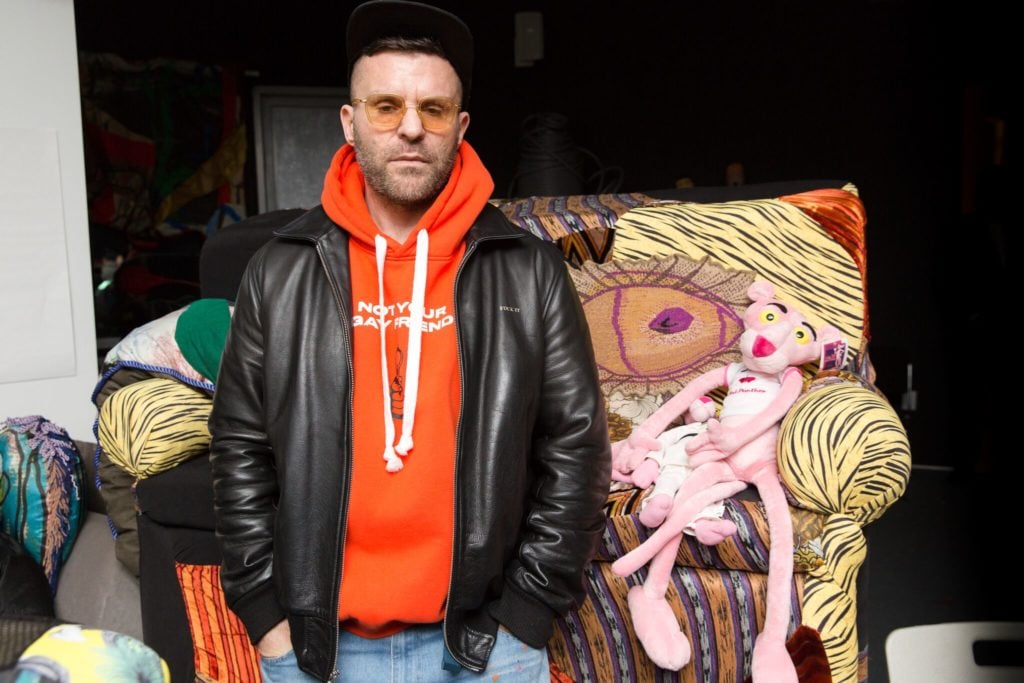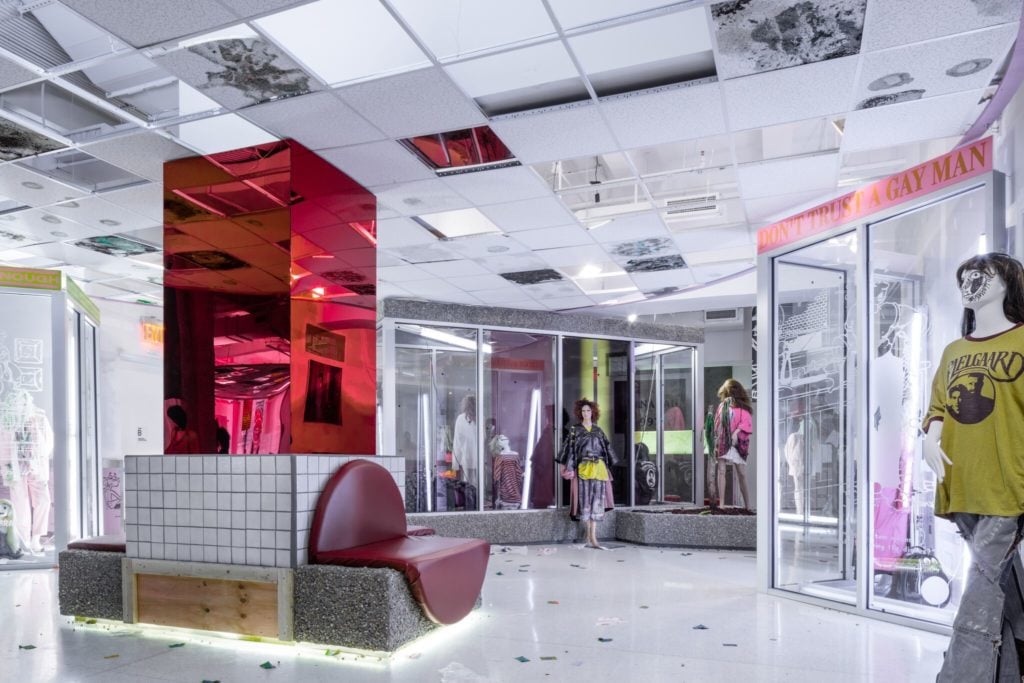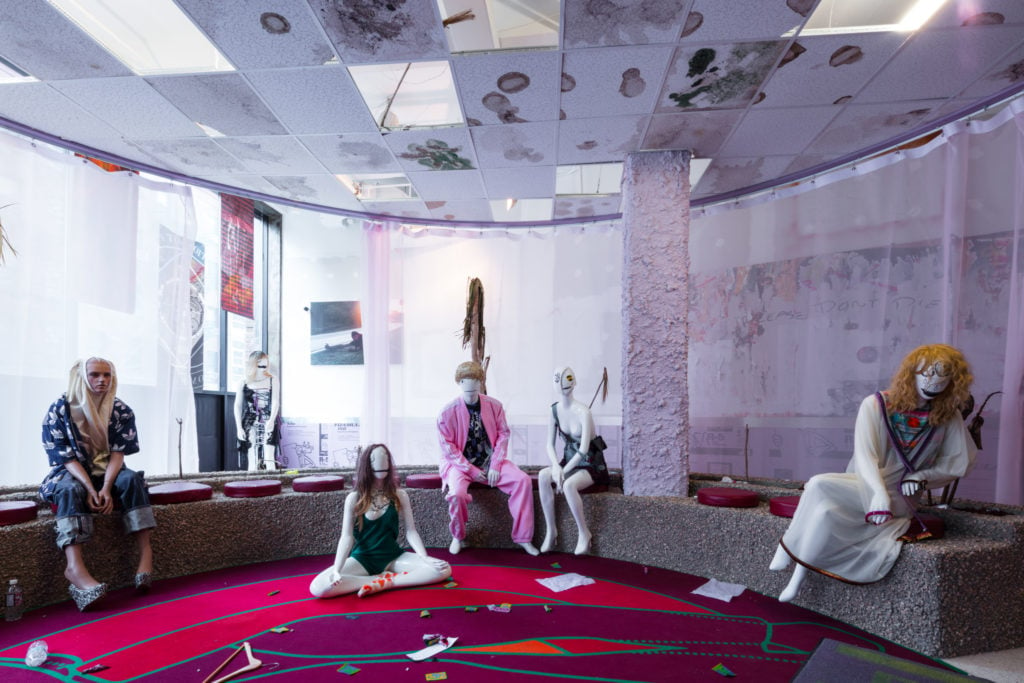People
Bjarne Melgaard on His Controversial Reputation and His New Show
The artist, who has two New York shows, wants it darker.

The artist, who has two New York shows, wants it darker.

Henri Neuendorf

Bjarne Melgaard is in the middle of installing his exhibition, titled “The Casual Pleasure of Disappointment,” at Red Bull Arts New York in Chelsea, and he’s not happy about the interruption. “Why am I doing all these fucking interviews now? I’m trying to set up the show,” he yells.
It’s a fitting introduction for an artist who creates headlines for all the wrong reasons, and whose controversial reputation routinely overshadows his art, which frequently deals with themes of paraphilia, homoeroticism, extreme violence, and drug abuse.
In 2015 he was accused of pedophilia when police were called to the artist’s exhibition at the Munch Museum in Oslo, where visitors complained about his video Gym Queens Deserve to Die, which featured a man inserting a baby’s arm into his mouth in a sexualized manner. In another performance piece called AIDS Roulette, he enlisted six gay men, one of whom was HIV positive, and randomly chose one to have intercourse with. Then there were the accusations of racism generated by his appropriated Allen Jones artwork “Chair” featuring a black woman “repurposed” as a seat.
By comparison, Melgaard’s latest show is considerably more tame, transforming Red Bull Arts New York’s Chelsea exhibition space into a dystopian, abandoned department store featuring mannequins clad in the artist’s designs. Some pieces are from his eponymous fashion line, whilst others are sewn together bits and pieces from his personal wardrobe.
Once Melgaard settled down enough to regain his composure, we sat to discuss his controversial reputation, his influences, and his latest show. The artist kept his answers short—he was visibly annoyed.
As an artist working across multiple mediums, how would you describe yourself?
I see myself as a painter. I see everything I do as part of the same big work, I see everything as one big work as a Gesamtkunstwerk.
How does your work with literature and fashion tie into your artistic practice?

Installation view “The Casual Pleasure of Disappointment” at Red Bull Arts New York. Photo: Red Bull Arts New York.
I was interested in fashion, and I was interested in writing. I published 14 novels—I’ve been writing since I was young. So it ties into everything I do. I also see my paintings as novels, my shows as novels. I guess that I see it as one. My writing has always been on my paintings and on my installations, so it’s always there and has been a part of it.
Do you think that the controversy and transgression of your work is overstated? Do you feel it overpowers the formalist aspects of your work?
Personally, I’m not out to provoke or be transgressive. That’s something that has been created very much from the outside. I think that in all my work there is a formal side that basically goes back to classical painting and drawing. I always work with drawing, it’s the medium I come from.
Do you think that it’s still possible to shock people in this day and age? Or have people become desensitized.
I don’t think it’s possible.
How do you respond to people’s reactions to your work?
What reactions? What do you mean?

Installation view “The Casual Pleasure of Disappointment” at Red Bull Arts New York. Photo: Red Bull Arts New York.
For instance, the exhibition you did at the Munch Museum in Oslo where there was a legal case and people saying the show was pornographic and the accusations of pedophilia. Do you feel this overpowers the formalist aspect of your work?
No, no.
Can you give me some insight into your artistic process.
It basically starts with drawing. I work with drawing always. The same with the show here. I draw the mannequins I draw the fashion figures. So it all starts with drawing and then develops from there and materializes into other forms.
What artists do you look at? What artists are you inspired by?
I’m inspired by older artists like Paul Gauguin, Claude Monet, and stuff like that.
What parallels would you draw between your work and the Impressionists you just mentioned?
I don’t think there are necessarily any parallels. They’re just artists that interested me. I’m also interested in art from the Rococo period like Chardin, Fragonard, and all these peoples.
It’s difficult to ignore the dark undertones in your work. What is behind your desire to express these themes?
I just address the things that seem urgent to me, that I see in the society around us. I mean with the political climate now, I think it’s weird that people aren’t producing more darker works. We’re going through a dark period in our history.